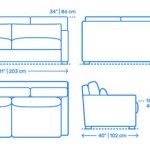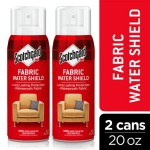My Leather Sofa Is Ripped: Understanding the Problem and Exploring Solutions
A ripped or torn leather sofa can be a disheartening sight. Leather furniture represents a significant investment, and damage detracts from its aesthetic appeal and diminishes its value. This article addresses common causes of leather sofa rips, outlines initial assessment steps, explores repair and restoration options, and discusses preventative measures to prolong the lifespan of leather upholstery.
Understanding Why Leather Rips
Several factors contribute to the ripping or tearing of leather on sofas. Recognizing these causes is crucial for effective repair and preventative care. One primary reason is simple wear and tear. Over time, the constant friction from sitting, sliding, and pressure causes the leather fibers to weaken. This is particularly true in high-use areas like cushions and armrests.
Another significant cause is dryness. Leather requires moisture to maintain its flexibility and strength. When leather dries out, it becomes brittle and prone to cracking and tearing. This dryness can be exacerbated by environmental factors such as low humidity, direct sunlight exposure, and proximity to heating vents. Furthermore, improper cleaning methods can strip leather of its natural oils, accelerating the drying process.
Accidental damage is a common culprit as well. Sharp objects, such as keys, pens, or even pets' claws, can easily puncture or scratch the leather. Spills, especially those containing acidic or alkaline substances, can weaken the leather fibers and make them more susceptible to tearing. Children playing and jumping on furniture can also contribute to structural stress and eventual ripping.
Finally, the quality of the leather itself plays a vital role. Lower-grade leather, often found on less expensive sofas, is generally thinner and less durable than top-grain leather. Inferior tanning processes can also compromise the leather's strength and resistance to tearing. Therefore, understanding the type and quality of leather used in the sofa's construction is important for assessing its vulnerability to damage.
Assessing the Damage: A Crucial First Step
Before attempting any repairs, it is essential to thoroughly assess the extent and nature of the damage. A detailed inspection will help determine the most appropriate repair method and the materials needed. The assessment should begin with a careful examination of the rip itself.
Determine the size and location of the rip. Is it a small tear, a large gash, or a series of smaller punctures? Is it located in a high-stress area, such as a seam or a cushion edge, or in a more isolated area of the sofa? The location will influence the repair technique and the likelihood of the repair holding long-term.
Evaluate the condition of the surrounding leather. Is the leather around the rip dry, cracked, or peeling? If so, additional conditioning and repair may be necessary to prevent further damage. Check for any underlying structural damage to the sofa frame or cushioning. A weakened frame can exacerbate the stress on the leather and lead to recurring rips after repair.
Identify the type of leather. Different types of leather require different repair techniques and products. Pigmented leather, also known as finished leather, has a protective coating that makes it more resistant to stains and scratches. Aniline leather, on the other hand, is more natural and porous, requiring specialized care and repair products. Identifying the leather type is critical for selecting the correct repair materials and ensuring a successful outcome.
Take clear photographs of the damage. These photos will be helpful for comparing the before and after results of the repair and for documenting the damage for insurance purposes, if applicable. They can also be useful if you decide to seek professional repair services, allowing the technician to assess the damage remotely before an on-site visit.
Exploring Repair and Restoration Options
Once the damage has been thoroughly assessed, the next step is to explore the available repair and restoration options. The best option will depend on the severity of the damage, the type of leather, and individual skill level. Options range from simple DIY repairs to professional restoration services.
Do-It-Yourself Repair Kits: For minor rips and tears, DIY leather repair kits can be a cost-effective solution. These kits typically include leather filler, adhesive, colorants, and applicators. The process involves cleaning the damaged area, applying the leather filler to fill the rip, smoothing the filler to match the surrounding leather, and then applying colorants to blend the repair with the original color. While DIY kits can be effective for small repairs, they may not provide a seamless finish for larger or more complex damage.
Leather Patches: Leather patches can be used to cover larger rips or tears. The patch should be cut slightly larger than the damaged area and then glued or sewn onto the existing leather. Matching the color and texture of the patch to the original leather is essential for a visually appealing repair. Leather patches can be purchased pre-cut or custom-made to match the specific sofa.
Professional Leather Repair Services: For significant damage, such as large rips, extensive cracking, or damage to multiple areas, professional leather repair services are often the best option. Professional technicians have the expertise, tools, and materials to restore leather furniture to its original condition. They can repair rips, replace damaged panels, and even re-dye the entire sofa to ensure a uniform appearance. While professional services are more expensive than DIY repairs, they typically provide a more durable and aesthetically pleasing result.
Re-upholstering: In cases of extensive damage, particularly if the leather is old and deteriorated, re-upholstering may be the most viable option. This involves completely removing the old leather and replacing it with new leather. Re-upholstering allows for a complete restoration of the sofa and provides an opportunity to upgrade the leather quality or change the color and style. It is a significant investment but can significantly extend the life of the sofa and restore its value.
Preventative Measures for Long-Term Care
Preventing leather rips and tears is just as important as knowing how to repair them. Implementing preventative measures can significantly extend the life of the leather sofa and protect the investment. Regular cleaning and conditioning are essential for maintaining the leather's suppleness and preventing it from drying out and cracking.
Regularly vacuum the sofa to remove dirt, dust, and debris. Use a soft brush attachment to avoid scratching the leather. Wipe down the leather with a damp cloth to remove surface stains. Avoid using harsh chemicals or abrasive cleaners, as these can damage the leather's finish.
Condition the leather every few months to replenish its natural oils and keep it from drying out. Use a high-quality leather conditioner specifically designed for the type of leather on the sofa. Apply the conditioner sparingly and evenly, following the manufacturer's instructions. Avoid over-conditioning, as this can make the leather greasy and attract dirt.
Protect the sofa from direct sunlight and heat. Prolonged exposure to sunlight can fade the leather's color and cause it to dry out and crack. Similarly, proximity to heating vents can accelerate the drying process. Position the sofa away from direct sunlight and heat sources, or use curtains or blinds to shield it from the sun's rays.
Avoid placing sharp objects on the sofa. Keys, pens, and other sharp objects can easily puncture or scratch the leather. Train pets to avoid scratching or climbing on the sofa. Trim their nails regularly to minimize the risk of damage.
Clean up spills immediately. Spills, especially those containing acidic or alkaline substances, can weaken the leather fibers and cause staining. Blot up spills with a clean, dry cloth as soon as possible. Avoid rubbing the spill, as this can spread the stain. Use a leather cleaner specifically designed for the type of leather on the sofa to remove any remaining residue.
Consider using leather protectors. Leather protectors are sprays or creams that create a barrier on the surface of the leather, protecting it from stains, spills, and scratches. Apply a leather protector according to the manufacturer's instructions, and reapply it regularly to maintain its effectiveness.
By understanding the causes of leather rips, assessing damage effectively, exploring repair options, and implementing preventative measures, owners can extend the life and maintain the beauty of their leather sofas.

Repairing Torn Leather A Quick And Dirty Guide Drsofa Com Blog

Fix A Rip In Your Leather Sofa Design Inkarnation Art And The Human Condition

Repairing A Ripped Seam In Leather Couch Hometalk

Save Your Sofa Here S How To Repair A Tear In Leather Couch Hometalk

How Do I Repair A Small Rip In My Leather Couch Seat Hometalk

Sofa Repairs With Leather Stitching Wefixanysofa Com

Easy Quick Fix For A Battered Couch Leather Covers Repair

Leather Upholstery Furniture Sofa Chairs Couches Ottomans Replace And Recover New Restuffing Sagging Broken Down Foam

Fix A Rip In Your Leather Sofa Design Inkarnation Art And The Human Condition

Leather Split And Tear Repair The Expert








